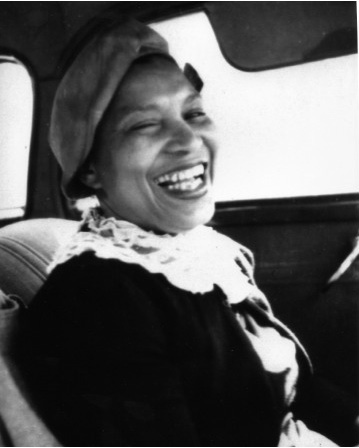
Zora Neale Hurston was born January 7, 1891. She would later turn back time 10 years in order to finish her high school education and tell people she was born in 1901. Her family moved to Eatonville, the first all-Black town to be incorporated in the United States, when she was three. Her father later became mayor of the town, which Hurston would glorify in her stories as a place black Americans could live as they desired, independent of white society. Hurston spent the remainder of her childhood in Eatonville, and describes the experience of growing up in Eatonville in her 1928 essay "How It Feels to Be Colored Me."

In 1918, Hurston began undergraduate studies at Howard University (YOU KNOW!), where she became one of the earliest initiates of Zeta Phi Beta Sorority and co-founded The Hilltop, the University's student newspaper. Hurston left Howard in 1924 and in 1925 was offered a scholarship to Barnard College where she was the college's sole black student. Hurston received her B.A. in anthropology in 1927, when she was 36. While she was at Barnard, she conducted ethnographic research with noted anthropologist Franz Boas of Columbia University. She also worked with Ruth Benedict as well as fellow anthropology student Margaret Mead. After graduating from Barnard, Hurston spent two years as a graduate student in anthropology at Columbia University.
She published her masterwork, Their Eyes Were Watching God, in 1937; Tell My Horse, her study of Caribbean Voodoo practices, in 1938; and another masterful novel, Moses, Man of the Mountain, in 1939. When her autobiography, Dust Tracks on a Road, was published in 1942, Hurston finally received the well-earned acclaim that had long eluded her. That year, she was profiled in Who's Who in America, Current Biography and Twentieth Century Authors. She went on to publish another novel, Seraph on the Suwanee, in 1948.
Check out this scene from the movie "Their eyes were watching God":
Still, Hurston never received the financial rewards she deserved. (The largest royalty she ever earned from any of her books was $943.75.) So when she died on Jan. 28, 1960--at age 69, after suffering a stroke--her neighbors in Fort Pierce, Florida, had to take up a collection for her February 7 funeral. The collection didn't yield enough to pay for a headstone, however, so Hurston was buried in a grave that remained unmarked until 1973.
 That summer, a young writer named Alice Walker traveled to Fort Pierce to place a marker on the grave of the author who had so inspired her own work. Walker found the Garden of Heavenly Rest, a segregated cemetery at the dead end of North 17th Street, abandoned and overgrown with yellow-flowered weeds. Walker purchased a marker for Hurston's grave and borrowing from a Jean Toomer poem, she dressed the marker up with a fitting epitaph: "Zora Neale Hurston: A Genius of the South."
That summer, a young writer named Alice Walker traveled to Fort Pierce to place a marker on the grave of the author who had so inspired her own work. Walker found the Garden of Heavenly Rest, a segregated cemetery at the dead end of North 17th Street, abandoned and overgrown with yellow-flowered weeds. Walker purchased a marker for Hurston's grave and borrowing from a Jean Toomer poem, she dressed the marker up with a fitting epitaph: "Zora Neale Hurston: A Genius of the South."
Hurston became the most successful and most significant black woman writer of the first half of the 20th century. Over a career that spanned more than 30 years, she published four novels, two books of folklore, an autobiography, numerous short stories, and several essays, articles and plays. There are annual festivals held in several cities in her honor.

No comments:
Post a Comment